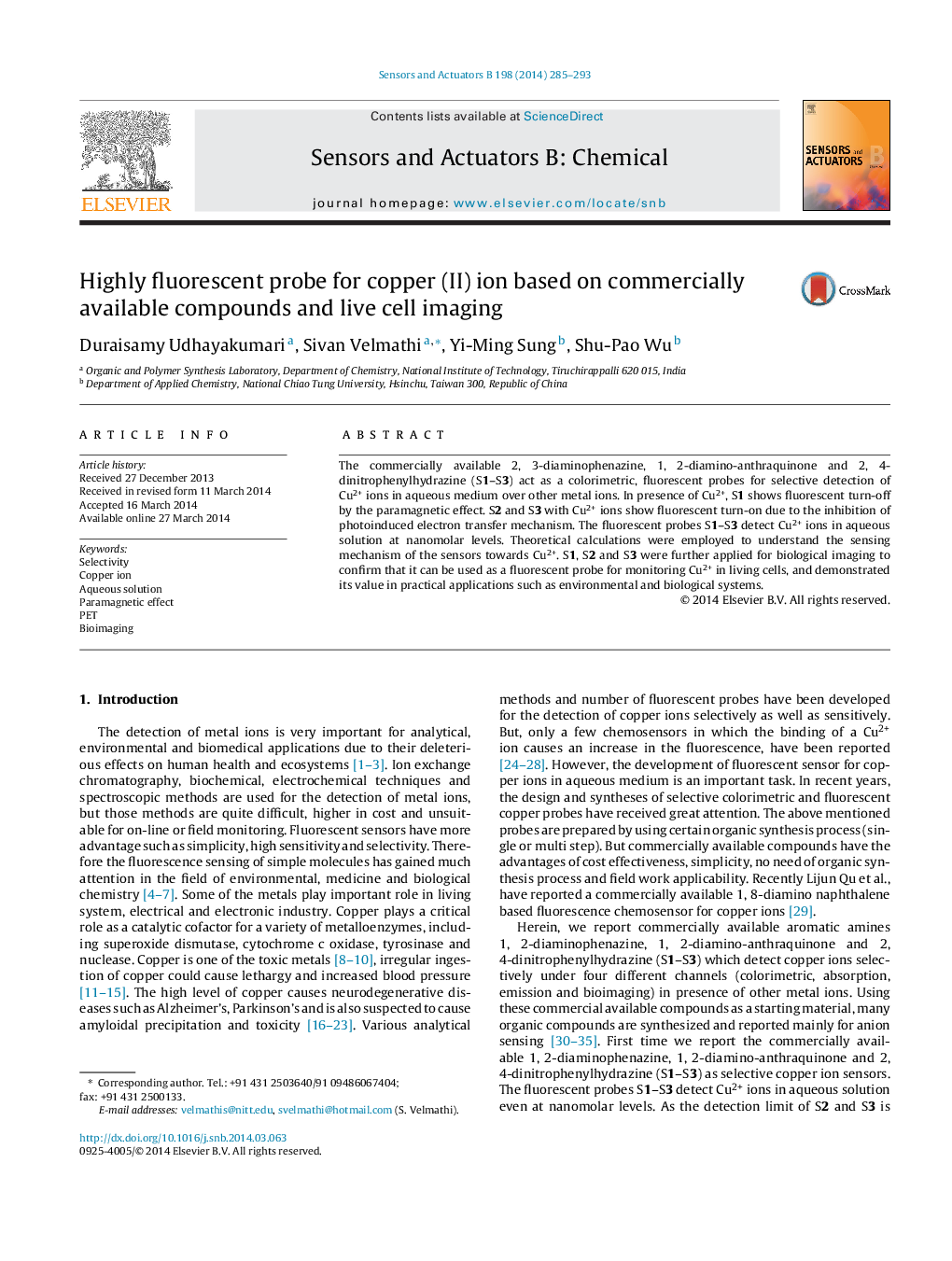| Article ID | Journal | Published Year | Pages | File Type |
|---|---|---|---|---|
| 742820 | Sensors and Actuators B: Chemical | 2014 | 9 Pages |
•The commercially available compounds act as selective sensor for Cu2+ ions.•S1 with Cu2+ ions show fluorescent turn-off by the paramagnetic effect.•S2 and S3 with Cu2+ ions show fluorescent turn-on due to the PET mechanism.•Sensors (S1–S3) detect Cu2+ ions in aqueous solution at nanomolar levels.
The commercially available 2, 3-diaminophenazine, 1, 2-diamino-anthraquinone and 2, 4-dinitrophenylhydrazine (S1–S3) act as a colorimetric, fluorescent probes for selective detection of Cu2+ ions in aqueous medium over other metal ions. In presence of Cu2+, S1 shows fluorescent turn-off by the paramagnetic effect. S2 and S3 with Cu2+ ions show fluorescent turn-on due to the inhibition of photoinduced electron transfer mechanism. The fluorescent probes S1–S3 detect Cu2+ ions in aqueous solution at nanomolar levels. Theoretical calculations were employed to understand the sensing mechanism of the sensors towards Cu2+. S1, S2 and S3 were further applied for biological imaging to confirm that it can be used as a fluorescent probe for monitoring Cu2+ in living cells, and demonstrated its value in practical applications such as environmental and biological systems.
Graphical abstractFigure optionsDownload full-size imageDownload as PowerPoint slide
